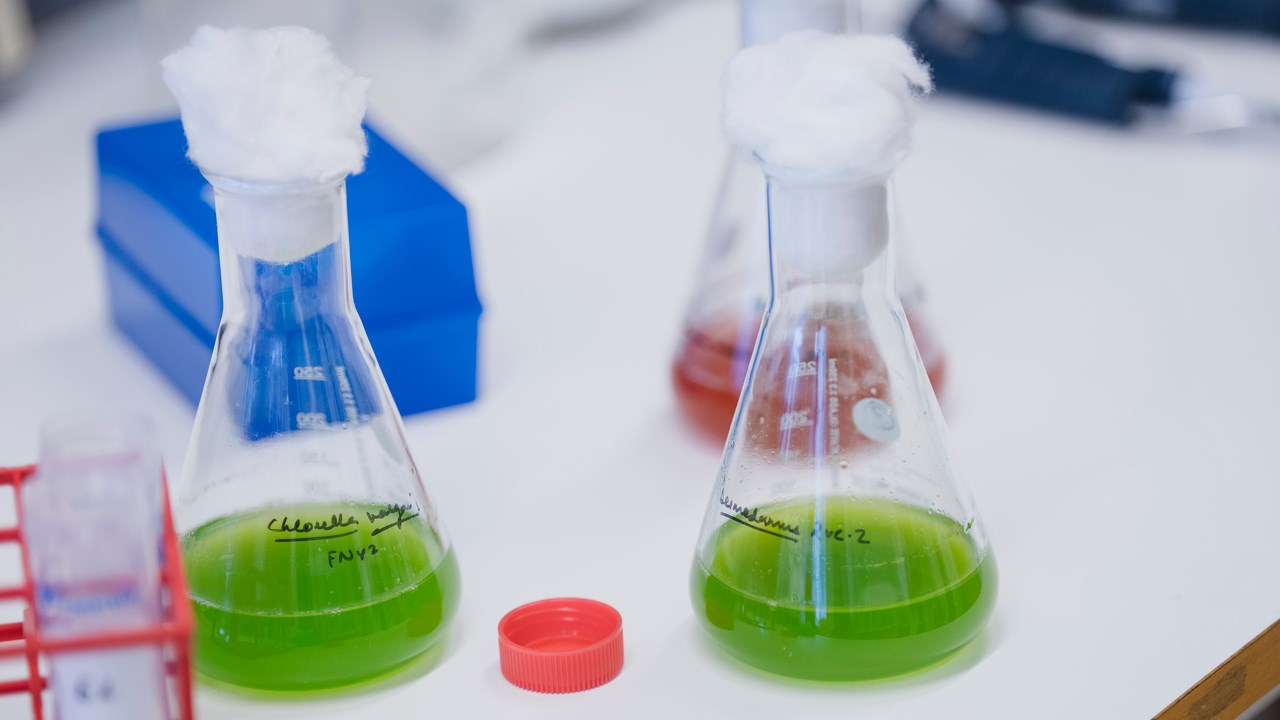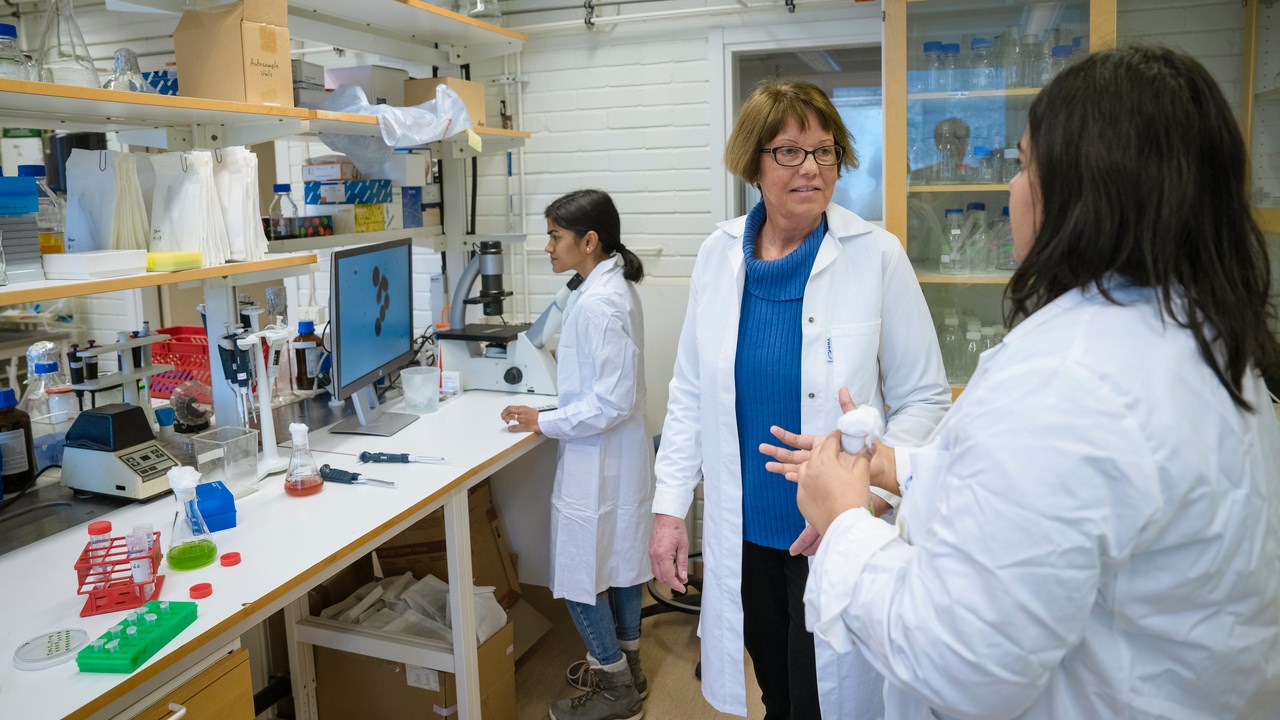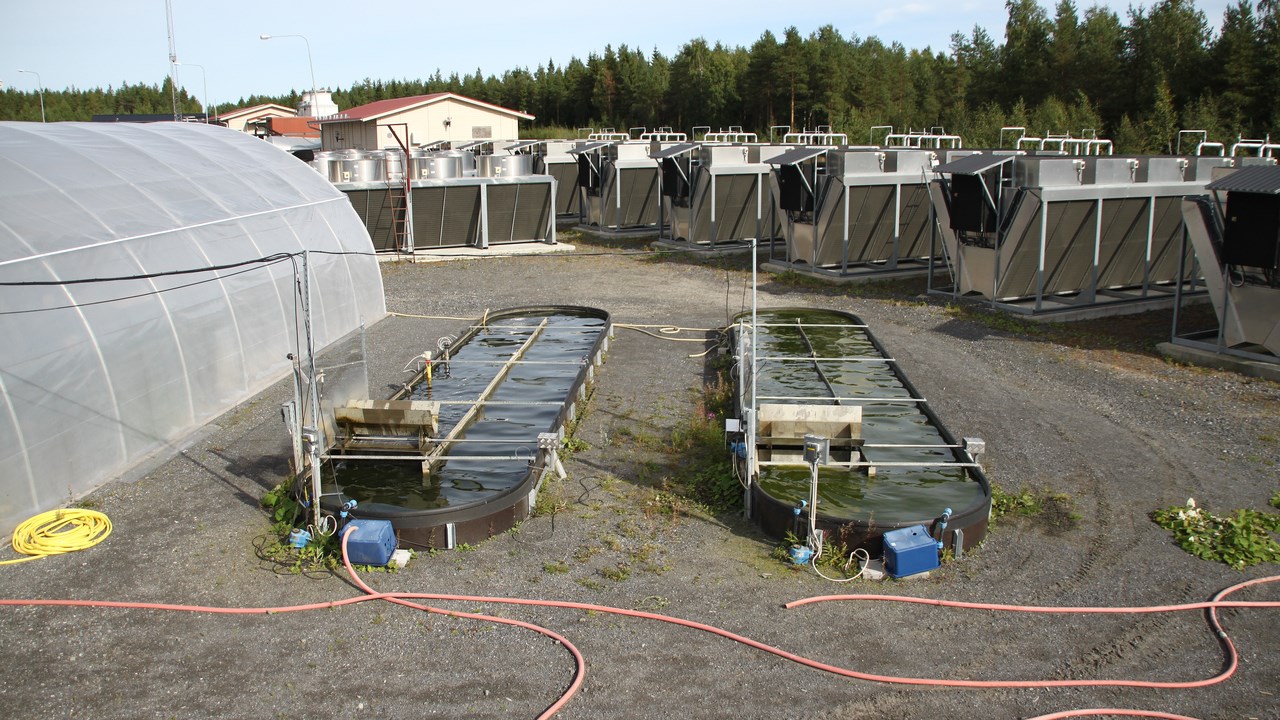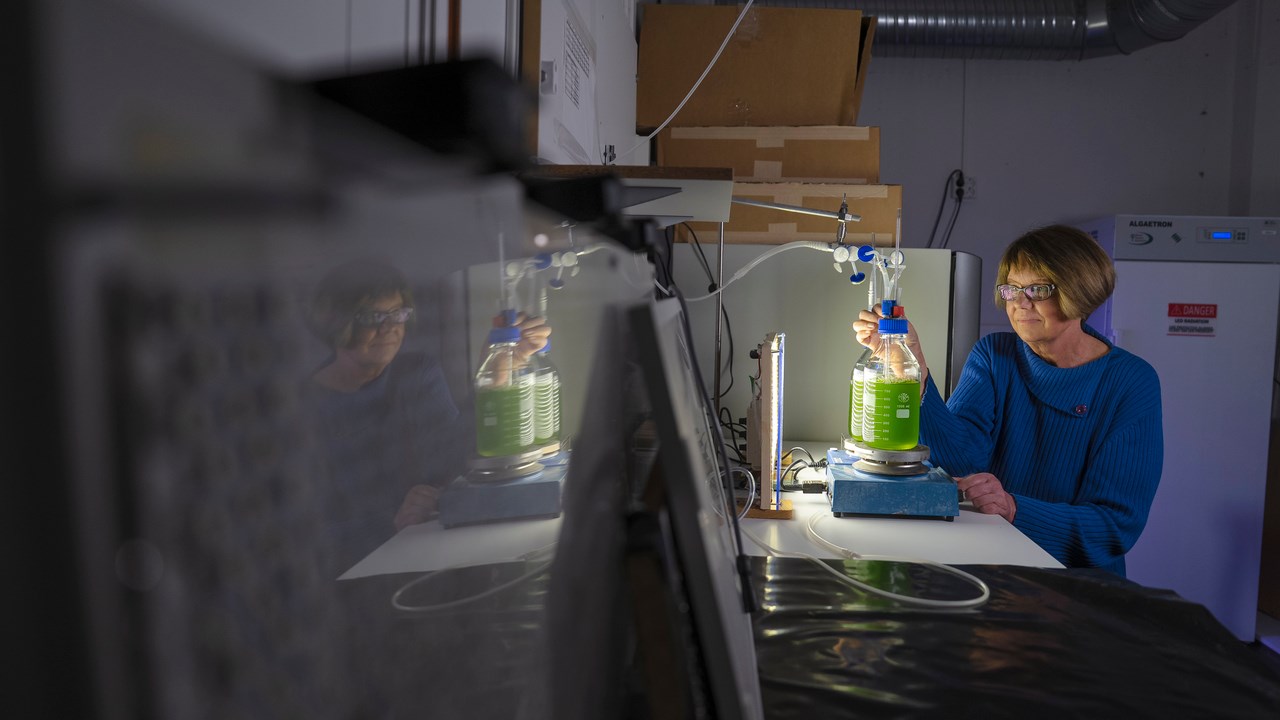
Christiane Funk is fascinated by the superpower of microalgae
PROFILE The microalgae in Christiane Funk's research lab purify wastewater and fluegases while producing raw materials for environmentally friendly plastics. Her mission is to make the processes cheaper and better, so they can be used on a larger scale and contribute to a sustainable future. “Microalgae have huge potential,” she says.






